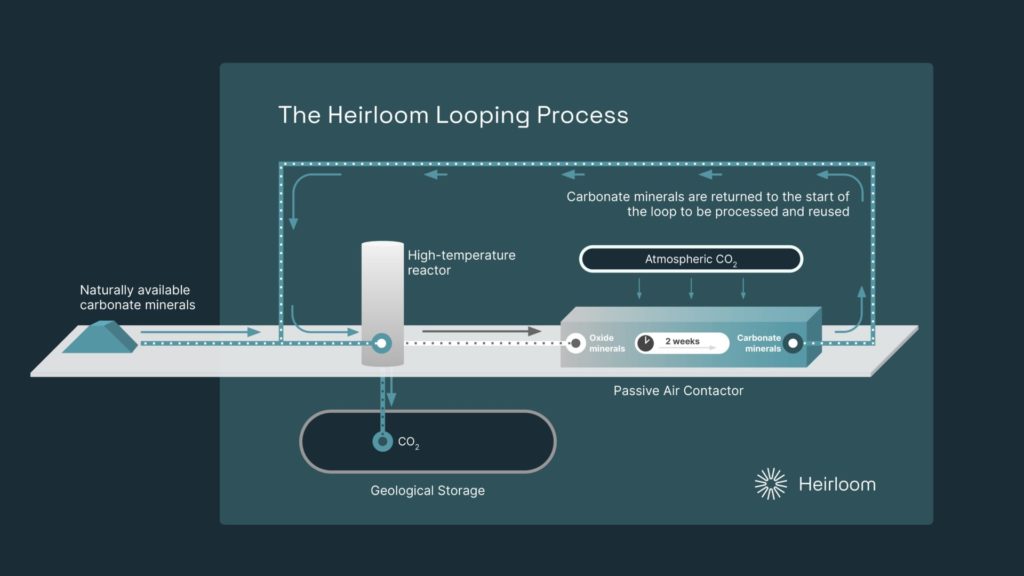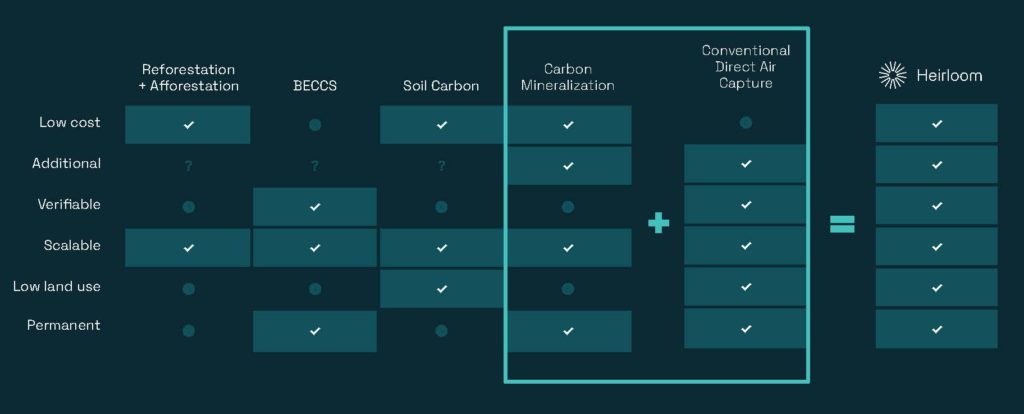To meet the guiding goal of the Paris Agreement to limit global warming to well below 2 degrees Celsius, we need to not only limit greenhouse gas emissions but also aggressively remove CO2 from the atmosphere. This reality is emphasized more than ever in the recent landmark scientific assessment from the UN Intergovernmental Panel on Climate Change. While difficult to forecast precisely, since it depends on how much CO2 we continue to emit in the years to come, it’s expected we’ll need to remove greenhouse gases at a clip of ~20 Gigatons/CO2 year by 2100.
There is simply a planetary imbalance of carbon sources and sinks baked into our planetary system, and quite frankly, we’re likely to continue emitting greenhouse gases in parts of our economy that are difficult to decarbonize, like long-distance aviation and heavy industry.
Growing potential for carbon dioxide removal
Scientists and entrepreneurs have been researching and developing carbon dioxide removal (CDR) solutions from both technology and nature for decades. The problem is many solutions have historically required tradeoffs that sacrifice scale and impact — like how long the CO2 can be removed for, how well we can verify that the removal actually happened, and how many resources (like energy or land) the removal solution requires. Any CDR that overcomes these tradeoffs and ensures CO2 removal on the order of decades and millennia has then been too costly or difficult to finance at any meaningful scale. No scale means no climate impact.
Markets are evolving and companies, governments, and investors recognize the economic and societal need to decarbonize. In fiscal year 2021 Autodesk reached its net zero commitment across our operations and value chain. We also launched the Autodesk Carbon Fund – an evergreen vehicle for achieving our net zero goals. Many Autodesk customers are doing the same, like Kingspan and Nestle. 89% of Autodesk’s largest customers have a public commitment to sustainability of some kind.* Many of these companies will be unable to eliminate emissions completely in the near term — as new technology and business models catch up to our shared ambitions — and will look to carbon credits and removals to offset emissions.
This increasing demand for voluntary carbon credits needs to be matched by a supply of high-quality carbon credits from CDR solutions. And as more CDR supply comes online, the cost curve of CDR can drop, opening greater opportunities for scale. There’s an emerging window of opportunity to create immense societal, environmental, and economic value from the creation of an entirely new CDR industry in the coming decades.
Why Heirloom?
Given this potential, the Autodesk Foundation is excited to announce its recent impact investment in Heirloom — a California-based startup bringing to market a cost-effective, scalable direct air capture removal (DAC) solution. Heirloom uses natural processes and naturally occurring minerals, enhanced with technology and automation, to drive down the cost of CDR to truly scalable levels.

Heirloom’s DAC solution enhances the natural process of carbon mineralization, helping minerals absorb CO2 from the air in days, rather than years. Once captured and processed, the atmospheric CO2 is injected underground into geological structures, where it is monitored and stored on the order of thousands of years. Heirloom, which was founded by engineers Shashank Samala, Noah McQueen, Max Scholten, and Andy Dubel in 2020, is focused on one goal and one goal only: remove 1 gigaton of CO2 by 2035.
By bringing together the best of both technological and nature-based solutions, Heirloom can overcome the traditional tradeoffs of CDR (shown below). With a price target of $50/metric ton of CO2 removed, Heirloom is 3-4 times cheaper than other best-in-class DAC solutions, which today offer credits in the $1000s/ton level and in the future will be limited to $100s/ton at best.

Heirloom’s promising technology and top-tier team has caught the attention of climate investors and credit purchasers alike. In less than a year, Heirloom has secured prominent buyers, including Stripe and Shopify.
Our collaboration
As with all companies in our portfolio, Heirloom has access to Autodesk software solutions, Autodesk pro bono consultants, and Autodesk industry networks as the team develops its first demonstration unit to service growing demand. In the coming months pro bono experts across Autodesk, along with Autodesk technology training partners, will support Heirloom in the design, validation, and development of its direct air capture technology. Autodesk software solutions, including Inventor, AutoCAD Electrical, and CFD, will help Heirloom to design DAC devices that can withstand natural forces and achieve its durability and cost goals.
The Autodesk Foundation is excited to offer Autodesk resources to advance the design, build, and commercialization of Heirloom’s technology. Together we aim to achieve Heirloom’s mission of removing 1 gigatons of CO2 by 2035. Now, more than ever is the time for collective climate action.
Learn more about how low-carbon innovations can fight the negative impacts of climate change in the Autodesk Foundation’s impact brief.
*The six industry sectors targeted in the online carbon management survey in May 2020 included architecture, MEP, structural engineering, civil engineering, construction, and facilities. The survey targeted 450 respondents in the United States, from medium-sized companies (250 to 4,999 employees), the majority of whom were carbon management decision makers.
